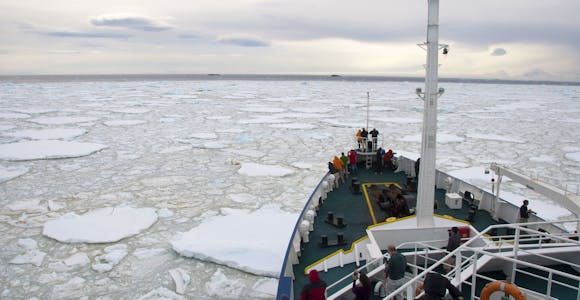
Svalbard Cruises
North of the Arctic Circle and halfway between Norway and the North Pole, Svalbard’s dramatic coastline and fjords are largely ice-free during high summer providing incredible …
Discover MoreSpecial Offers Available: Swoop has access to the widest range of offers and can help you find the right trip, cabin, & price.
Expert impartial advice at no extra cost: no-nonsense advice on 500 voyages across 25 ships
The Arctic Experts. No Compromises: there’s no question we can’t answer
The only B Corp certified Arctic specialist: so your adventures can be a force for good
A full concierge service, unlike booking direct: we leave nothing to chance in delivering your perfect trip
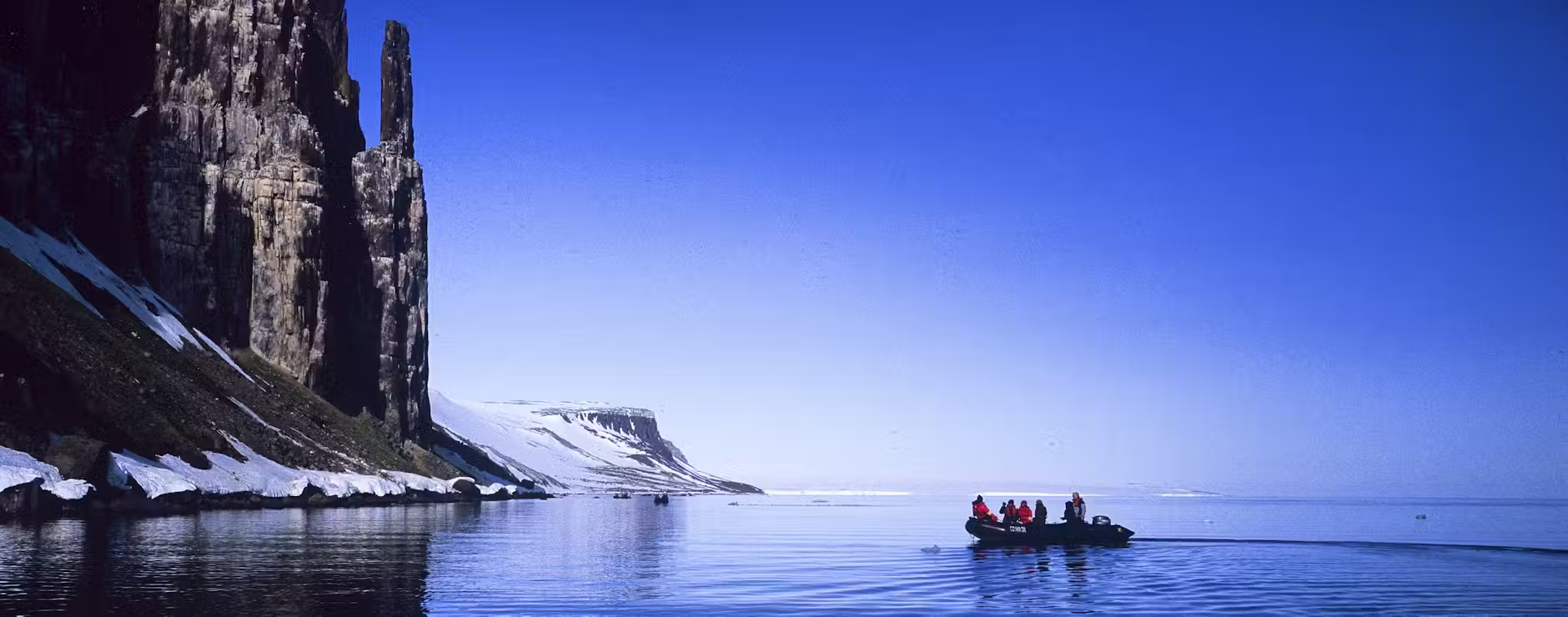
Expedition cruising is all about active exploration - trekking the arctic tundra, watching for wildlife, studying Svalbard’s history or sailing through sea ice, accompanied throughout by your team of polar experts.
Typically two off-ship excursions a day are arranged, lasting around two to three hours each, subject to ice conditions and wildlife sightings which are influencing factors.
As the name suggests these shorter trips (6-10 days) offer an excellent introduction to the Svalbard, with daily off-ship excursions and good opportunities for wildlife sightings.
Special Offers:Swoop has access to the widest range of offers and can help you find the right trip, cabin, & price.

This popular introduction to Svalbard is keenly priced and, with numerous early season departures, guarantees plenty of ice. Sail onboard one of the newest ships in polar waters and spot bears from the plentiful deck space. Optional kayaking and hiking…
These longer trips (11-13 days) not only improve your chances of wildlife sightings, but the later departures also offer the opportunity to do a full circumnavigate of Spitsbergen.
Special Offers:Swoop has access to the widest range of offers and can help you find the right trip, cabin, & price.

Maximise wildlife sightings with the chance to circumnavigate Spitsbergen island. Search for walrus, arctic fox, whales and of course the ‘King of The Arctic'. Sail through the Hinlopen Strait and visit abandoned trapping stations and experience glaciers up close all…

Travelling at the height of summer, this trip is the longest of any Svalbard cruise and offers the best possible conditions for thrilling wildlife encounters. Your circumnavigation of Spitsbergen includes huge glaciers, epic bird cliffs and ice-choked channels. Plus, there's…
Monacobreen sits at the head of Liefdefjorden and is one of Svalbard’s most memorable glacier fronts. Named for the Duke of Monaco, its broad wall of blue ice regularly calves with thunderous impact. It is an excellent spot for rare gulls like ivory and Sabine’s gulls, which glide over the floes or rest on the ice.
When conditions allow, Zodiac cruising among the bergy bits is magical, with crackling ice, shifting colours and close-up views of the glacier face. The combination of wildlife, serenity and explosive drama captures the essence of an Arctic expedition.

A zodiac cruises beside Monaco glacier
Alkefjellet is one of Svalbard’s most exhilarating wildlife spectacles. Sheer dolerite cliffs rise straight from the water, hosting more than 100,000 Brünnich’s guillemots packed onto narrow ledges.
From a Zodiac or kayak, you drift beneath a living wall of birds, surrounded by constant calls and the rush of wings. Arctic foxes sometimes appear along the shoreline, adding tension as they wait for fallen chicks or eggs. The scale, noise and energy make Alkefjellet an unforgettable highlight of any expedition.
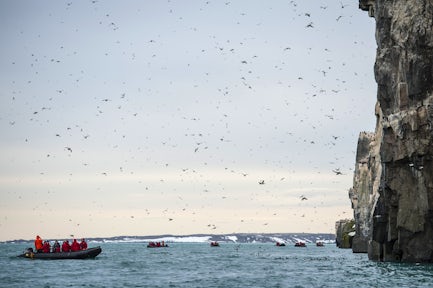
When you're travelling by ice-strengthened ship with a flexible itinerary to make the most of local ice and wildlife conditions, expedition cruising couldn’t be more different to a traditional cruise.
One of the northernmost islands of the Svalbard archipelago, at a latitude of 81° degrees north of the equatorial plane, Phippsoya is only 540 nautical miles from the North Pole. Due to its proximity to the permanent pack ice, Phippsoya offers the potential for great polar bear sightings and has certainly lived up to expectation over the years.
Whether you’re fortunate with bear sightings or not, navigating through heavy ice is a thrilling experience and you really do get a sense of being off the map. Being so northerly it’s worth noting that access to Phippsoya can’t be guaranteed, even during the summer months, particularly earlier in the season (May - early July).
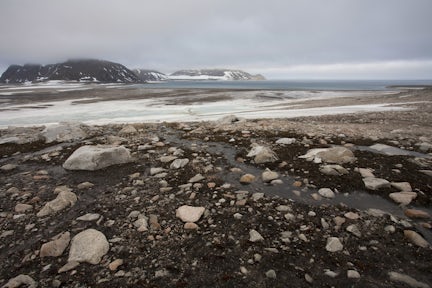
Phippsoya, Spitsbergen
Bourbonhamna goes by many names, including Bamsebu (‘Teddy Bear Hut’) and Fleur de Lys Hamna. Well known for beluga whales which can often be sighted transiting the narrow sound, it’s a stunning setting and a popular landing site.
While the massive piles of beluga whale bones often capture people’s attention, an old hunting cabin and other historic artefacts make for interesting diversions as you walk the tundra. It's also a good place to see reindeer which inhabit the area in good numbers.
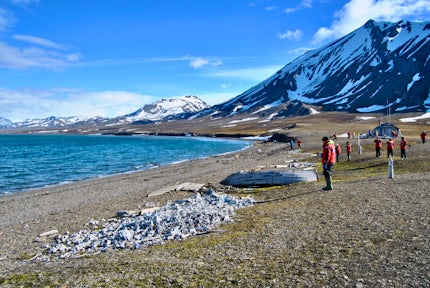

North of the Arctic Circle and halfway between Norway and the North Pole, Svalbard’s dramatic coastline and fjords are largely ice-free during high summer providing incredible …
Discover More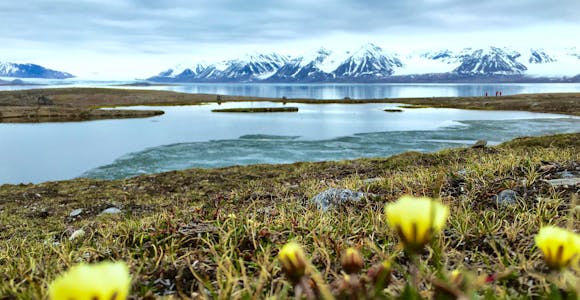
While Svalbard may be an almost year round destination, the changing weather, number of daylight hours, amount of ice and snow conditions through the year all have a marked effect …
Discover More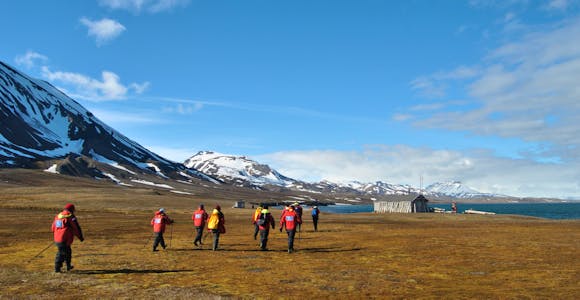
Svalbard is geographically closer to the North Pole than to Norway. Surprising then, that getting there is quite so straightforward, with regular flights from Norway to …
Discover More_(3).jpg?auto=format,enhance,compress&fit=crop&crop=entropy,faces,focalpoint&w=580&h=300)
The largest and only permanently populated of Svalbard’s islands, Spitsbergen is where all the activity and life happens. The beating heart of Spitsbergen itself is the town of …
Discover MoreMaking the correct choice of ship is key. With firsthand experience of all of the ships we offer, let Swoop help guide you to exactly the right one.
We'll spend some time listening to your aspirations, then discuss the kind of experience that might suit you.
Next we'll discuss the options, shortlist the best trips for you and present you our impartial recommendations.
We'll place a 24 hour hold on your preferred option - without obligation - whilst we talk through the details.
Our team of experts are ready to help you with any questions about a trip to the Arctic.
This website uses cookies to ensure you get the best experience on our website. Privacy policy
We don’t charge a commission and there are no hidden fees. Just impartial, expert advice from the leading Polar cruise agent. Schedule a call with our Arctic Experts today.